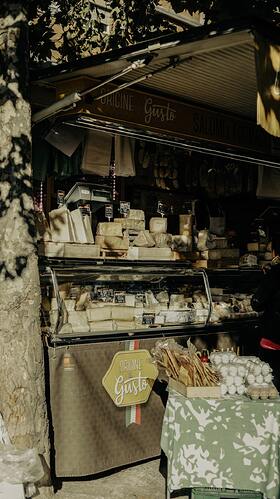Reggiano, also known as Parmigiano Reggiano, is a hard, aged cheese made from cow’s milk. It is named after the region in Italy where it is exclusively produced, which includes the provinces of Parma, Reggio Emilia, Modena, and parts of Bologna and Mantua.
History
The history of Reggiano cheese can be traced back to the Middle Ages. It is believed that Benedictine monks in the area were the first to produce the cheese, using techniques and recipes that have been passed down through generations. The production of Reggiano cheese is regulated by the Consorzio del Formaggio Parmigiano-Reggiano, an organization that was formed in 1934 to ensure the quality of the cheese and protect its name.
Production
The production of Reggiano cheese is a labor-intensive and time-consuming process. The milk for the cheese is collected from local farmers and is typically produced by cows that are free to roam and graze in open fields. The milk is then heated and combined with rennet, which causes it to coagulate and form curds. The curds are then cut into small pieces and placed in round molds.
After the cheese has been removed from the molds, it is soaked in a brine solution, which helps to add flavor and preserve the cheese. The cheese is then left to age for a minimum of 12 months, during which time it is turned and brushed regularly to promote even moisture distribution and the development of a hard outer rind.
Flavor and Texture
Reggiano cheese has a nutty, slightly sweet flavor with a hard, granular texture. The cheese gets harder and sharper in flavor as it ages, with some varieties being aged for up to 36 months. The cheese is typically grated and used in a variety of dishes, including pasta dishes and risotto. It can also be eaten on its own as a snack or used as a topping for salads and soups.
Uses
Reggiano cheese is a versatile ingredient that can be used in a variety of dishes. It is often grated and used as a topping for pasta dishes, such as spaghetti bolognese or carbonara. The cheese can also be used to make sauces, such as alfredo sauce, or added to risotto for extra flavor. It is a popular ingredient in salads, particularly in combination with balsamic vinegar, and can be sliced and eaten on its own as a snack.
Nutritional Value
Reggiano cheese is a good source of protein, calcium, and vitamins, and is a low-carb food. It is high in fat, however, so it should be consumed in moderation as part of a balanced diet.
Conclusion
Reggiano cheese is a beloved Italian cheese with a rich history and a distinct flavor profile. It is a versatile ingredient that can be used in a variety of dishes, and its high nutritional value makes it a great addition to a healthy diet. Whether used as a topping for a pasta dish or enjoyed on its own, Reggiano cheese is a delicious and timeless ingredient that continues to be enjoyed by people around the world.
Disclaimer
6do Encyclopedia represents the inaugural AI-driven knowledge repository, and we cordially invite all community users to collaborate and contribute to the enhancement of its accuracy and completeness.
Should you identify any inaccuracies or discrepancies, we respectfully request that you promptly bring these to our attention. Furthermore, you are encouraged to engage in dialogue with the 6do AI chatbot for clarifications.
Please be advised that when utilizing the resources provided by 6do Encyclopedia, users must exercise due care and diligence with respect to the information contained therein. We expressly disclaim any and all legal liabilities arising from the use of such content.

